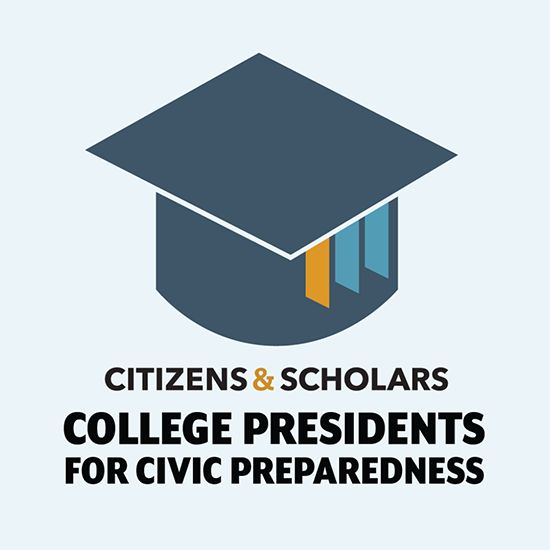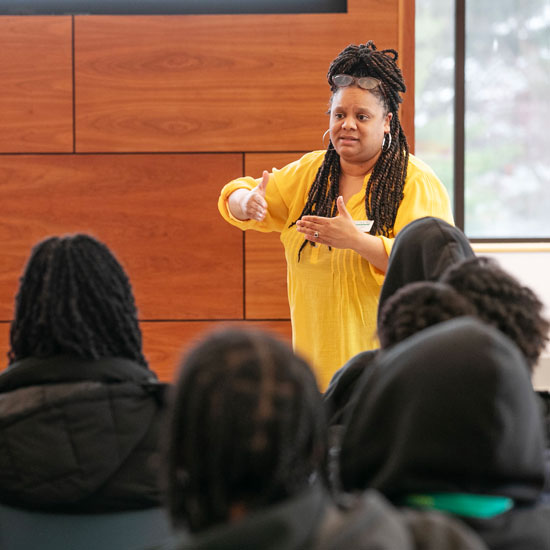Buon appetito!
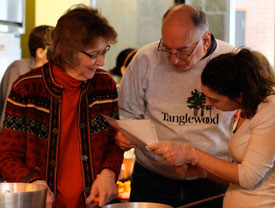
Students study recipes before starting to work.
A taste of the Renaissance—literally—spiced up the learning in Professor Barbara Garbin’s “Food in Renaissance Italy” course this year.
With help from Classics Professor Dan Curley and recipes from Ancient Roman Feasts and Recipes (Adapted for Modern Cooking) the 17 students in the Italian course gained a deeper appreciation of Renaissance culture by preparing and eating food typical of Ancient Rome, an era admired and revived in the Renaissance.
Among their discoveries: a number of the foods that we currently identify as “Italian,” such as tomatoes, are New World innovations.
The class, which included traditional Skidmore students and several community residents who audited the course, met in the test kitchen of Murray-Aikins Dining Hall to “explore the culture of Renaissance Italy through the medium of food,” said Garbin. She added, “Food is an intrinsic part of our everyday life and culture. It informs our culture today as it did in the Renaissance. Learning about the changes in foodstuffs sand preparation through the centuries fosters a historical perspective, particularly on the cultural elements we tend to take for granted.” She wanted the students to learn about different ingredients from the Renaissance era, when items such as tomatoes, corn and turkey, for example, did not exist. “Those were ingredients from the new world,” explained Garbin.
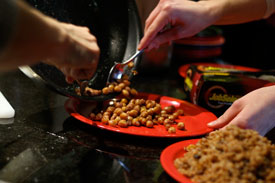
Food is prepared for serving.
So the students relied on typical Renaissance-era fare: poultry, grains like bulgur, and chickpeas. The menu featured fried chickpeas, bulgur with nuts and raisins, chicken breasts in walnut sauce, Roman coleslaw and spiced fig bonbons. The cookbook’s authors, Jon and Julia Solomon, explained that the bulgur dish, to be historically accurate, would incorporate emmer-wheat groats, an item “rather hard to come by in modern times.” The class also made liguamen, a sauce that was factory-made in antiquity. It combined anchovies, oregano, and grape juice and was used to enhance cooked food. Explained Garbin, “The diner used it, not the cook.” It was among the ingredients in the chicken breast recipe.
As they cooked, students spoke with each other and the faculty in Italian.
Curley, who provided information on the Roman dining experience, said that this was the first time the two departments had collaborated this way. When Garbin first called him to ask about joining forces for a class session, he suggested the test kitchen in order to allow the students to fully immerse themselves in the experience.
According to Garbin, the students were eager to cook. “At our first class they asked if we could prepare food,” she said. Skidmore’s Dining Services staff “was very cooperative” in helping her to plan a class meeting at the dining hall, and “Dan was very kind to be available to work with us on this class session,” she added.
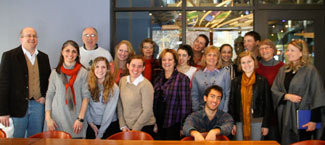
Curley and Garbin (left) with students from the "Food in
Renaissance Italy" course. (Morgan Gruer photos)
Garbin said she was “very pleased with the experience. The students certainly seemed to appreciate the opportunity to engage firsthand with the task of making food based on ancient recipes. It gave them a clearer understanding of the difference in ingredients and cooking process from ancient to contemporary times.”
